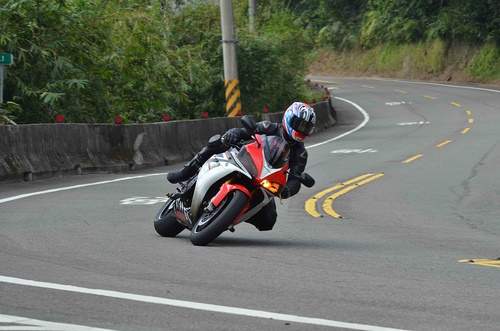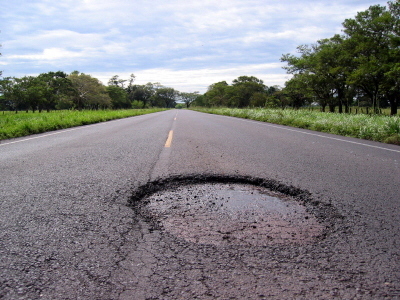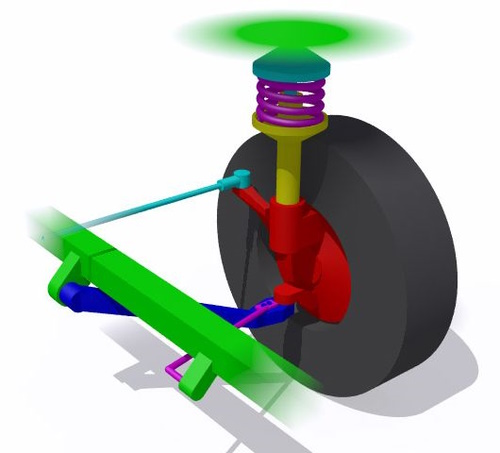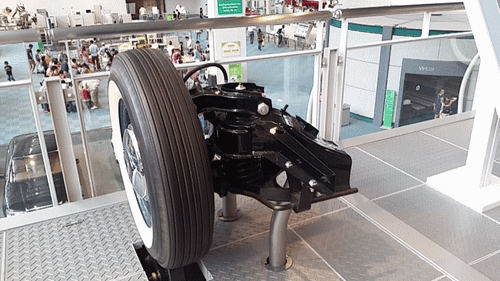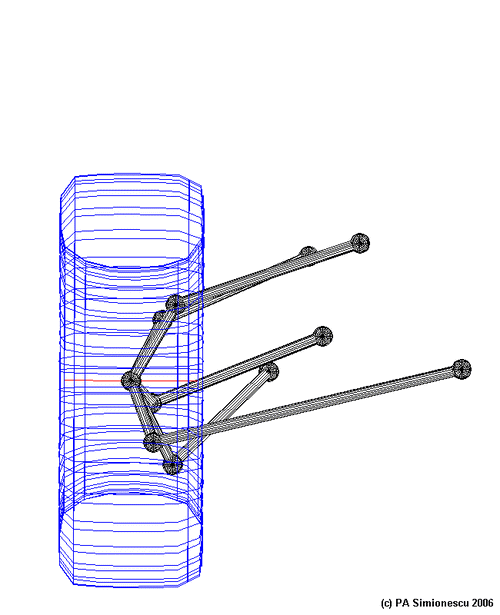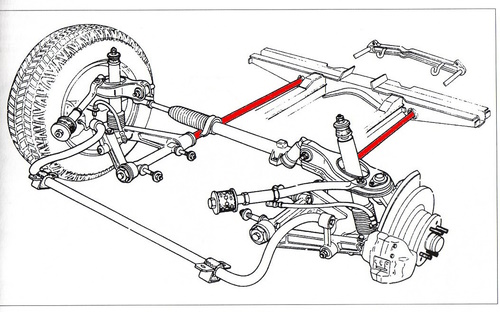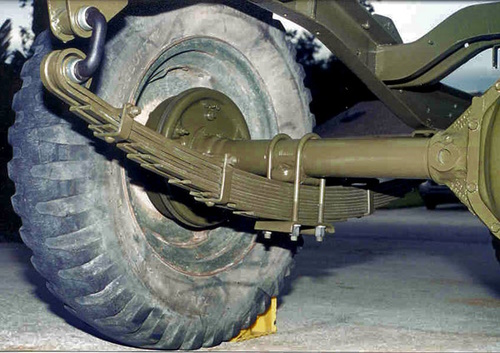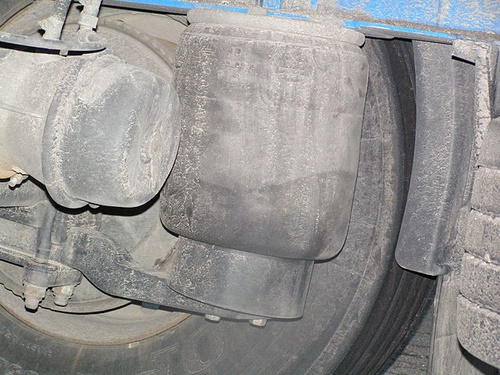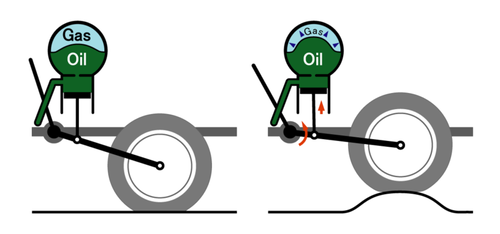How Car Suspension Works: Explained in Simple Terms
This week’s engineering post is about car suspension: its function and importance, the different types…
The suspension is an essential part in any car: it can make the car more comfortable and smoother, it also can improve handling, and even prevent accidents!
There isn’t one single street-legal car without it. Why is this? Let’s find out.
What it does
The main purpose of the suspension is not only to provide a comfortable and smooth ride, but also to make the car easier to drive mainly by increasing the grip of the tires to the ground. Without the suspension, a car would just bounce in the tiniest bump on the road!
Thanks to the suspension, driving through a bumpy road, cornering, going off-road or braking is easier.
How it works
Imagine a car going 50 km/h approaching a speed bump. Without the suspension, the car would just bounce uncontrollably, and would probably lose control. However, with suspension, the wheels effortlessly raise and lower passing the speed bump without even moving the car frame, making this situation really smooth and comfortable.
There are many types of suspension systems. However, all of them function the same way and even share some parts. All of the suspension systems have a material or object that always wants to return to its original shape. Take for example a spring. Even if you try to stretch it or compress it, The spring will always return to its original shape.
Thanks to this mecanism, each wheel can independently move up and down, adapt to the surface, and always return to its original height.
Different types of independent suspension systems
MacPherson strut
This is the most common type of independent suspension in modern cars. It is cheap and simple to produce, making it cheap and easy to install on any car.
The MacPherson strut suspension system is made up of three main parts:
-
The spring, which is the “returning shape” object we previously mentioned. This part is essential because it’s the one that makes the wheels able to independently go up and down without directly affecting the car frame.
-
The shock absorber, which “helps” the spring by absorbing some of the oscillations and movement of the spring, and also regulates the speed of the deformation of the spring. This energy taken from the spring is dissipated as heat.
-
The strut’s “frame”, which I don’t know if it has a specific name, but basically this holds all the parts of the suspension together, and attaches to the axle and the frame. It is able to compress to also “help” the spring raise and lower the wheel.
Double wishbone
The double wishbone suspension system is a system commonly found in sports and racing cars. It uses two wishbone-shaped arms that are connected both to the wheels and the frame, and they rotate when the wheel moves up and down. The spring and shock absorber are connected to one of the arms and to the frame.
It is made up of two main parts (the shock and spring count as one):
-
The arms, which are connected to the wheels and the frame. They slightly rotate when the wheel moves up or down.
-
The spring and shock, which are connected both to one of the arms and to the frame, which makes compression of the spring possible when the wheel moves.
Multi-link
This type of suspension is similar to the double wishbone suspension, because they both use “arms” which are connected to the frame and the wheel. However, the multi-link suspension system usually uses more than 3 arms, which instead of being wishbone-shaped, they can also be shaped other ways, such as a trailing arm or just as a straight line.
This type of suspension is not very common because it is hard and expensive to produce. Also, it is important to know that this type of system is not only comfortable and feels smooth, but also it is great to increase traction on the wheels, which improves cornering and handling overall.
It is made up of 2 main parts:
-
The arms, which usually go from 3 to 5 for each wheel. They rotate as the wheel moves up and down.
-
The spring and shock, which are connected to the arms and to the frame.
Torsion bar
As its name says, the torsion bar suspension system also uses torsion to control the wheel.
A bar which car bend is located between two wheels (the ones on the back or the ones on the front). The central part of the bar is fixed to the chassis, making it possible for the wheels to bend the bar when they move vertically.
A similar type of suspension is the torsion axle suspension, which is a little simpler and requires very little or no maintenance at all.
These are the main parts of the torsion bar suspension system:
-
The bar, which is fixed to the chassis and uses torsion as the “return to the original shape” system.
-
The spring and shock, which are usually there to help the torsion bar.
Leaf spring
This type of suspension is relatively popular, due to its low cost to produce and to maintain.
This suspension uses bending force to return to its original shape and thus acting as a spring.
Some slightly curved planks are connected on each end to the chassis. The axle is connected to the planks. Thanks to the slight curvature of the planks, when the chassis moves down, the planks suffer bending, which make them want to return to their original curved shape.
These are the main parts of the leaf spring suspension system:
-
The planks, which are stacked one on top of another and are slightly bent. They always want to return to the curved state, so when a force is applied to try to bend it, the planks also push to return to the curved shape.
-
The spring and shock, which help the planks do its job, but the leaf spring is the main suspension.
Air suspension
This type of suspension is rare on street cars, but is widely used on passenger vehicles such as trains or buses. The air suspension offers a smooth ride.
One caracteristic of this suspension is that it can usually be adjusted to different ride heights.
Instead of using coil springs, this system uses air springs, which use air to return to its original shape, as we talked about before. It is mounted to the axle and to the chassis directly.
A similar type of air suspension is used in the front suspension fork of many bikes, but instead of an air spring, only compressed air and a shock is used.
These are the main parts of the air suspension system:
-
The air spring which acts as a normal coil spring but instead, it uses air.
-
The shock absorber. This suspension doesn’t have a coil spring, as the air spring is the one who replaces it. The shock helps the air suspension not bounce too much and also regulates the speed of compression.
Hydropneumatic
The hydropneumatic suspension system was invented by Citroën, and uses several complex system to make the ride quality as best as possible. It offers a smooth ride, adjustable height and other caracteristics to adapt to the driving conditions.
It is used in luxury cars, due to it’s high cost to produce and maintain.
